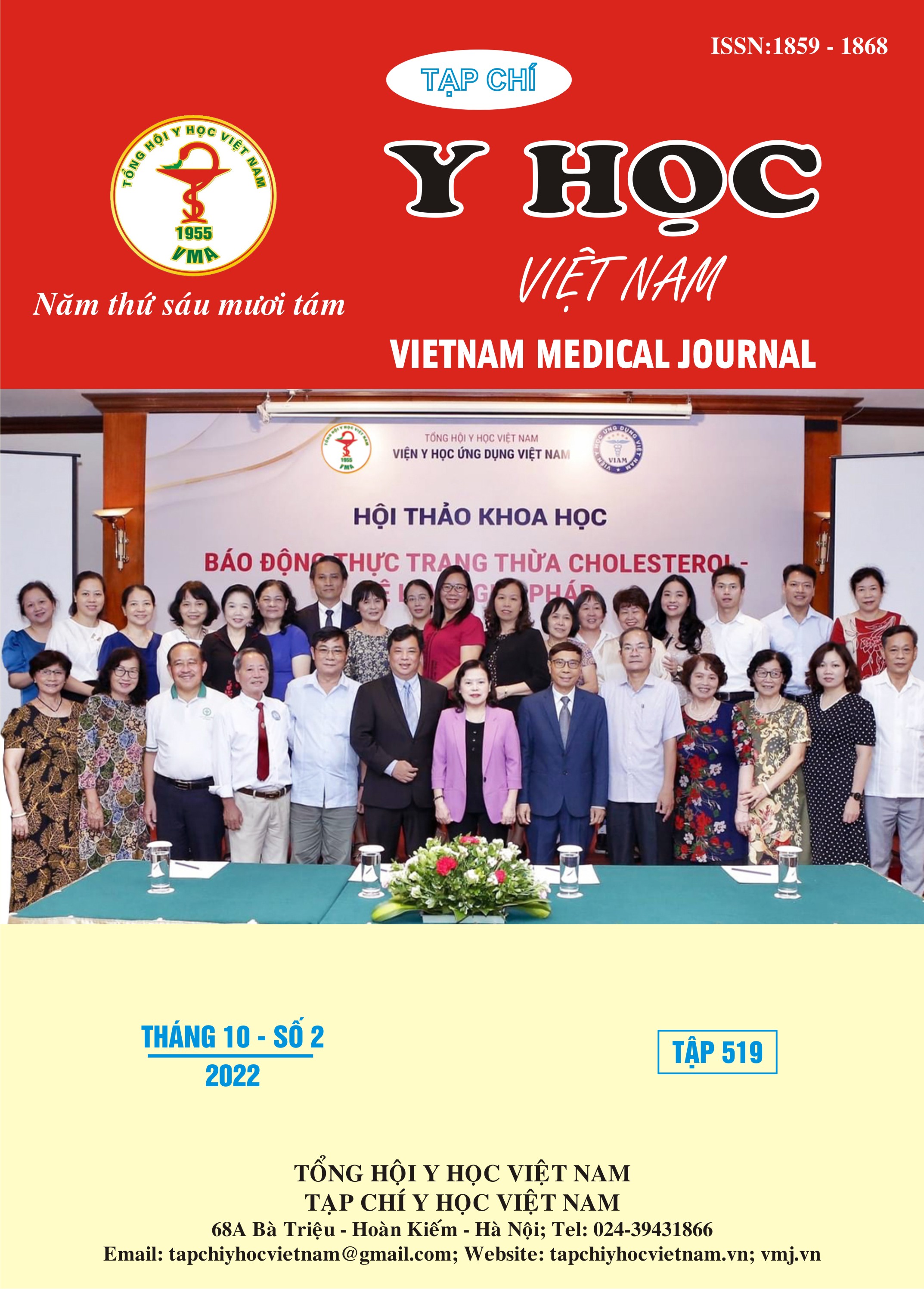THE RISK FACTORS OF OBSTRUCTIVE SLEEP APNEA IN HOSPITALIZED PATIENTS WITH CHRONIC OBSTRUCTIVE PULMONARY DISEASE IN THE RESPIRATORY CENTRE – BACH MAI HOSPITAL
Main Article Content
Abstract
Objectives: Overlap syndrome refers to obstructive sleep apnea (OSA) combined with chronic obstructive pulmonary disease (COPD), and has worse outcomes than either condition alone. We aimed to evaluate the prevalence and possible predictors of overlap syndrome. Methods: This cross-sectional study included ninety patients with COPD who performed spirometry and polysomnography in Respiratory Centre, Bach Mai Hospital. Risk factors for COPD coexisting OSA were identified by univariate and multivariate logistic regression analyses. Results: In the total of ninety patients, 56 patients (62.2%) had overlap syndrome. There were no significant differences in age, sex ratio, FVC % pred, FEV1 % pred, and prevalence of diabetes in the two groups (all p>0,05). CAT Score, mMRC score, the frequency of acute exacerbation in the past year, the frequency of hospitalization in the past year, body mass index (BMI), neck circumference, waist circumference, Epworth Score, STOP-BANG version Vietnam Score, pulmonary artery pressure, the prevalence of hypertension were all significantly higher in the COPD-OSA group compared with the COPD group (p<0.05). STOP-BANG version Vietnam was an independent risk factor for OSA in COPD patients (p<0.05). Conclusion: Patients with overlap syndrome had worse quality of life, poorer clinical outcomes and more daytime sleepiness than patients with COPD alone. STOP-BANG was an independent risk factor for OSA in patients with COPD.
Article Details
Keywords
chronic obstructive pulmonary disease (COPD), obstructive sleep apnea (OSA), risk factor, polysomnography
References
2. Shawon MSR, Perret JL, Senaratna CV, Lodge C, Hamilton GS, Dharmage SC. Current evidence on prevalence and clinical outcomes of co-morbid obstructive sleep apnea and chronic obstructive pulmonary disease: A systematic review. Sleep Med Rev. 2017;32:58-68. doi:10.1016/j.smrv.2016.02.007
3. Zamarrón C, Paz VG, Morete E, del Campo Matías F. Association of chronic obstructive pulmonary disease and obstructive sleep apnea consequences. Int J Chron Obstruct Pulmon Dis. 2008; 3(4):671-682.
4. Lavie P, Herer P, Lavie L. Mortality risk factors in sleep apnoea: a matched case-control study. J Sleep Res. 2007;16(1):128-134. doi:10.1111/ j.1365-2869.2007.00578.x
5. Lévy P, Kohler M, McNicholas WT, et al. Obstructive sleep apnoea syndrome. Nat Rev Dis Primer. 2015;1(1):15015. doi:10.1038/ nrdp.2015.15
6. Soler X, Liao SY, Marin JM, et al. Age, gender, neck circumference, and Epworth sleepiness scale do not predict obstructive sleep apnea (OSA) in moderate to severe chronic obstructive pulmonary disease (COPD): The challenge to predict OSA in advanced COPD. PLoS ONE. 2017;12(5). doi:10.1371/journal.pone.0177289
7. Berry RB, Budhiraja R, Gottlieb DJ, et al. Rules for scoring respiratory events in sleep: update of the 2007 AASM Manual for the Scoring of Sleep and Associated Events. Deliberations of the Sleep Apnea Definitions Task Force of the American Academy of Sleep Medicine. J Clin Sleep Med JCSM Off Publ Am Acad Sleep Med. 2012;8(5):597-619. doi:10.5664/jcsm.2172
8. Zhang P, Chen B, Lou H, et al. Predictors and outcomes of obstructive sleep apnea in patients with chronic obstructive pulmonary disease in China. BMC Pulm Med. 2022;22(1):16. doi:10.1186/s12890-021-01780-4


